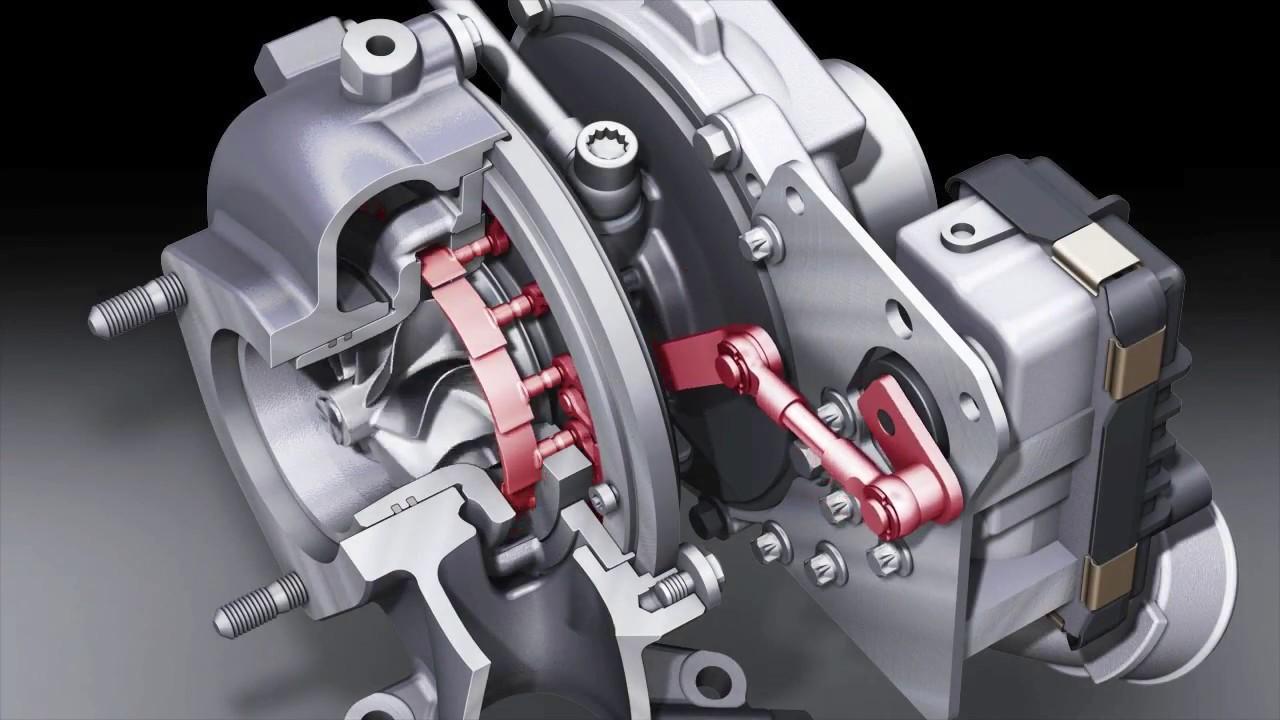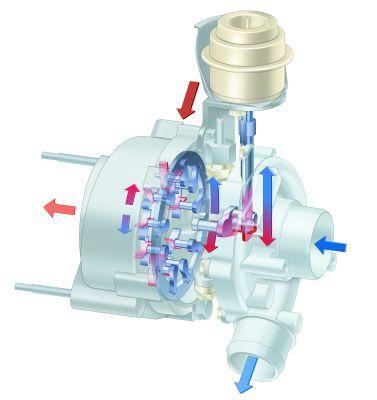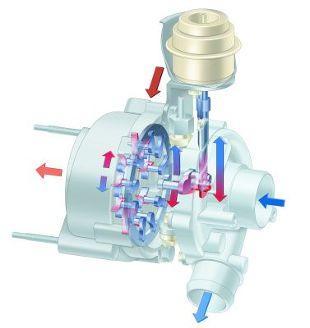
VTG - Variable Geometry Turbocharger
 The principle of operation of the turbocharger was invented over 100 years ago. Only in our time this device is experiencing a renaissance in popularity.
The principle of operation of the turbocharger was invented over 100 years ago. Only in our time this device is experiencing a renaissance in popularity.
The principle of operation of the turbocharger was invented over 100 years ago. Only in our time this device is experiencing a renaissance in popularity.
 One of the simpler ways to increase engine power is supercharging, that is, forcing air into its cylinders. Of the various types of compressors, the most popular is the turbocharger, which is usually combined with a diesel engine.
One of the simpler ways to increase engine power is supercharging, that is, forcing air into its cylinders. Of the various types of compressors, the most popular is the turbocharger, which is usually combined with a diesel engine.
The turbocharger consists of two rotors located on the same shaft. The rotation of the rotor, driven by the energy of the exhaust gases leaving the engine, causes the second rotor to rotate simultaneously, which forces air into the engine. Thus, no additional energy source is required to drive the turbocharger.
In each piston engine, about 70% of the energy obtained from the combustion of fuel is unproductively released into the atmosphere along with exhaust gases. The turbocharger not only improves the performance of the engine, but also increases its efficiency.
Unfortunately, as is usually the case in technology, there are no ideal designs, so the classic turbocharger has its drawbacks. First of all, it lacks the possibility of a “smooth” change in the boost pressure of the cylinders and is characterized by a delay in the reaction to pressing the gas pedal. It lies in the fact that engine power does not increase immediately after a quick press on the accelerator pedal. Only after a while the engine quickly picks up speed. These shortcomings were especially noticeable in the first common rail diesel engines. This is how the VTG turbocharger with variable turbine geometry was invented.
It works by changing the angle of the turbine blades, so that the operation of the turbocharger is very efficient even at low engine load and low speeds. In addition, it became possible to smoothly adjust the boost pressure.
In VTG diesel engines, there is no noticeable lag in work, and the torque is high even at very low engine speeds, and power is also increased.
